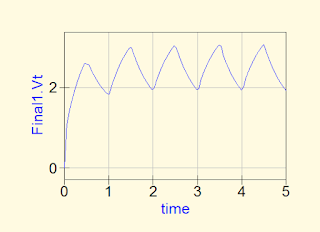

This is where you will choose the data from the simulation to be displayed.

In this case, the corner frequency will be the 3 dB roll-off point of your filter. For our example, we are doing an LC filter, Pi type (where the first branch is a shunt), Bessel type, Low pass, Third ( order – scroll down to the Example for mathematical info), and a corner frequency of 1 GHz. The filter synthesis window will open.At the top menu, under “Tools”, click “Filter synthesis”.
#Qucs tutorial full size
Click the images for a full size version. Let’s create a simple 3-pole, low pass, Bessel type LC filter. QUCS seems to have matured and expanded a lot in version 0.0.19, and this filter synthesis functionality is barely scratching the surface of what this utility can do. Recently however, I dived into the filter synthesis part of QUCS, and I have to say I’m really impressed. I first tried QUCS about a ten years ago, and for whatever reason (lack of program maturity, lack of my own persistence) I didn’t give it much time. The easiest way to create this is with an s-parameter template as show below.QUCS, or Quite Universal Circuit Simulator, is a freeware utility that allows you to draw circuit schematics, and perform AC & DC simulation, noise simulation (for S-parameters, and AC simulations), S-parameter simulation, and a whole lot more upon them. This is just a human readable csv file that lists the phase/magnitude(or equivalent representation) of the S11 measurement at every frequency. Once measured you will need to export a ‘touchstone’ s1p file. Try to think if you error is likely to be a significant fraction of a wavelength. As normal the accuracy you need for this is dependent upon the required frequency. If we design a matching network it will be assumed that this is where we place our components. We must be very careful to understand the calibration plane of tour antenna. However I will highlight one critical point.
#Qucs tutorial how to
I won’t go into detail here about how to measure an antenna as this was covered in my previous posts. The Device Under Test could really be any device, but as I am an antenna geek, lets assume its an antenna. Once you get to grips with the basics here, you can always experiment in QUCSstudio with alternate components. However it is possible to use alternative components such as transformers, transmission lines, or even resistors as part of an matching network. Of course, I had totally forgotten!!! But lets go through it again.Ī matching network is normally a network of inductor or capacitors selected to convert from one impedance to another. I was asked in the comments about exactly to do this. This could be used to quickly design antenna matching networks for instance. In my last blog post I alluded to the fact that you could take s1p touchstone files generated by nanoVNAsaver and use this to automatically calculate/simulate a matching network in QUCSstudio.


 0 kommentar(er)
0 kommentar(er)
